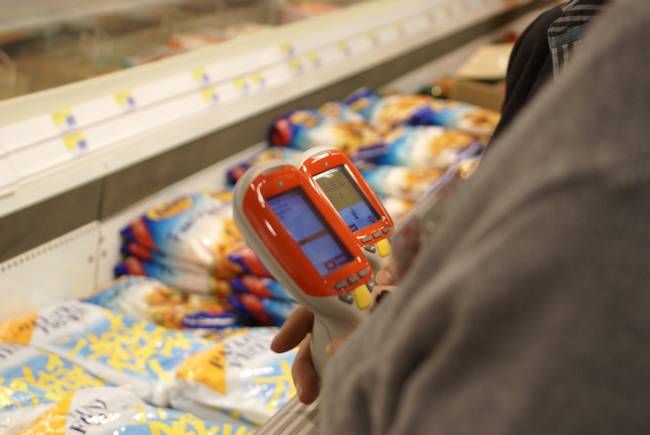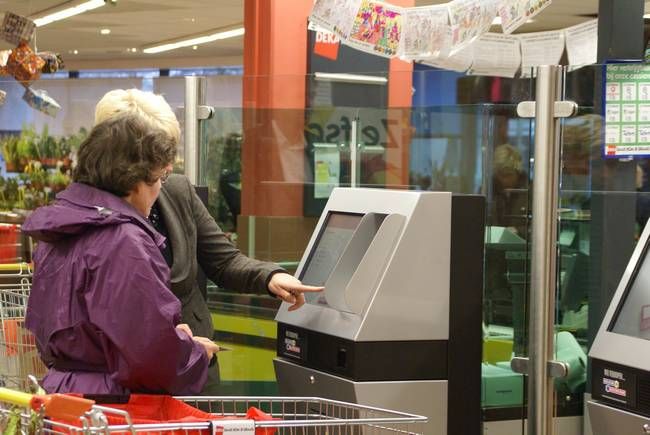Barcode Scanners in the Hands of Every Shopper
Carrefour, Belgium Rolls Out Self-Scanning Solution

Carrefour, one of the largest retail chains in Belgium, has recently implemented Re-Vision's MyScan software solution. Carrefour conducted a pilot program to test the innovative POS system in 2009, high levels of customer acceptance were reported and Carrefour has begun roll-out of the self-scan POS to their stores across Belgium. Self-scanning is an innovative shopping concept thought to increase customer loyalty and optimize customer flow by placing barcode scanners in the hands of each customer.
After an extensive market research and a serious selection process, My-Scan solution from Re-Vision and Motorola MC17 retail mobile computer were chosen to support the roll-out, as the best-of-breed combination providing the required functionality and integration flexibility.
"Introducing self-scanning increased the supermarket's popularity with the customers, because this option offers them more control over the time spent in the store. We at Carrefour are quite happy with the results of the project - our main goal was to make the shopping trip quick and enjoyable, from the moment our customer enters the store and until the check-out. We feel that now they are getting a better service and benefit from a more relaxed shopping experience." said Walter Simons, Director Business Solutions IT-Stores at Carrefour, Belgium.
The Self-Scan Experience
To begin using My-Scan, customers must obtain a customer card. Enrollment occurs in one of three ways:
- 1. At an unattended kiosk or at the entrance station where the customer completes and signs an application form.
- 2. By an employee at the customer service desk.
- 3. By using their loyalty card (My-Scan integrates easily with the
loyalty systems already in use by the retailer).
In the first 2 cases, the customer’s details are entered into the My-Scan system database and he or she receives an identification card. If the customer has a loyalty card already, he just needs to sign and accept general terms and conditions.
Once a customer has their card, they can obtain a scanner. The customer approaches the scanner wall, scans his card and watches as the next available terminal lights up. The Motorola MC17 device can be conveniently placed in the holder on the shopping cart.
Customers shop normally, except that they now scan the barcode on — or on a board near — each item before putting it in their cart. To add more than one item of the same product, the ‘ ’ button can be used. To return an item the customer taps the ‘-‘ key. Promotional items are displayed in a recognizable color, and where the infrastructure and configuration permit, promotions can be ‘pushed’ to the customer via the terminal.
When a customer is finished shopping he or she heads over to a checkout or payment zone where an ‘End of Ticket’ barcode is scanned, either at a pay point by the customer, or at a regular POS by the cashier. The system prepares and analyzes the ticket. If a re-scan is necessary, the system will inform the user and the hostess, otherwise the ticket is processed. In order to pay, the customer scans the barcode card or hands it to the cashier. The barcode is read by the system, and the payment process begins. Various payment options are available to the customer depending on the retailer. Re-Vision claims that paying at an unmanned kiosk is the most popular option stating the customer's avoidance of lines as the reason.
In order to pay, the customer scans the barcode card or hands it to the cashier. The barcode is read by the system, and the payment process begins. Various payment options are available to the customer depending on the retailer. Re-Vision claims that paying at an unmanned kiosk is the most popular option stating the customer's avoidance of lines as the reason.
Is self-scanning a more pleasant and efficient way to shop or is it merely a cool, but impractical concept (like gullwing doors or Uggs with shorts)? I've never had the pleasure of shopping with a My-Scan system so I can't offer an educated guess. But we welcome your thoughts in the comment box below.
{jcomments on}
